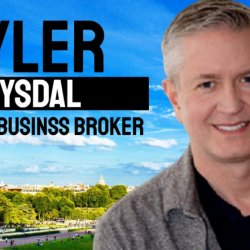an intro to growth equity tyler tysdal

To keep knowing and advancing your career, the list below resources will be helpful:.
Growth equity is typically referred to as the personal financial investment method inhabiting the happy medium in between endeavor capital and traditional leveraged buyout methods. While this might hold true, the technique has actually progressed into more than just an intermediate personal investing approach. Development equity is typically referred to as the private investment technique inhabiting the middle ground in between equity capital and conventional leveraged buyout methods.

This combination of factors can be compelling in any environment, and a lot more so in the latter stages of the market cycle. Was this article valuable? Yes, No, END NOTES (1) Source: National Center for the Middle Market. Q3 2018. (2) Source: Credit Suisse, "The Incredible Shrinking Universe of Stocks: The Causes and Consequences of Fewer U.S.
Option financial investments are complicated, speculative investment lorries and are not ideal for all investors. A financial investment in an alternative financial investment entails a high degree of threat and no guarantee can be considered that any alternative mutual fund's investment goals will be accomplished or that financiers will receive a return of their capital.
This industry information and its value is an opinion just and should not be trusted as the just important information readily available. Details consisted of herein has actually been gotten from sources thought to be dependable, however not guaranteed, and i, Capital Network presumes no liability for the details provided. This info is the residential or commercial property of i, Capital Network.

they use utilize). This financial investment method has actually assisted coin the term "Leveraged Buyout" (LBO). LBOs are the primary financial investment method type of most Private Equity companies. History of Private Equity and Leveraged Buyouts J.P. Morgan was considered to have actually made the first leveraged buyout in history with his purchase of Carnegie Steel Company in 1901 from Andrew Carnegie and Henry Phipps for $480 million.
As mentioned earlier, the most infamous of these offers was KKR's $31. 1 billion RJR Nabisco buyout. This was the biggest leveraged buyout ever at the time, numerous people believed at the time that the RJR Nabisco offer represented the end of the private equity boom of the 1980s, since KKR's investment, however famous, was eventually a substantial failure for the KKR financiers who bought the company.
In addition, a lot of the cash that was raised in the boom years (2005-2007) still has yet to be utilized for buyouts. This overhang of dedicated capital avoids lots of financiers from devoting to purchase new PE funds. In general, it is estimated that PE firms handle over $2 trillion in properties worldwide today, with close to $1 trillion in dedicated capital available to make new PE financial investments (this capital is sometimes called "dry powder" in the industry). .
An initial investment might be seed financing for the company to start building its operations. In the future, if the business proves that it has a feasible product, it can get Series A financing for additional development. A start-up business can complete several rounds of series financing prior to going public or being obtained by a monetary sponsor or strategic purchaser.
Leading LBO PE firms are identified by their large fund size; they are able to make the biggest buyouts and handle the most financial obligation. Nevertheless, LBO transactions can be found in all shapes and sizes – . Total deal sizes can range from tens of millions to 10s of billions of dollars, and can occur on target business in a variety of industries and sectors.
Prior to executing a distressed buyout opportunity, a distressed buyout company has businessden to make judgments about the target business's worth, the survivability, the legal and reorganizing concerns that may arise (should the business's distressed assets require to be reorganized), and whether the lenders of the target business will end up being equity holders.
The PE company is required to invest each respective fund's capital within a period of about 5-7 years and then normally has another 5-7 years to offer (exit) the investments. PE firms usually use about 90% of the balance of their funds for new investments, and reserve about 10% for capital to be used by tyler tysdal denver their portfolio companies (bolt-on acquisitions, extra offered capital, etc.).
Fund 1's committed capital is being invested over time, and being returned to the limited partners as the portfolio business because fund are being exited/sold. As a PE firm nears the end of Fund 1, it will require to raise a new fund from new and existing limited partners to sustain its operations.




Ingen kommentarer endnu